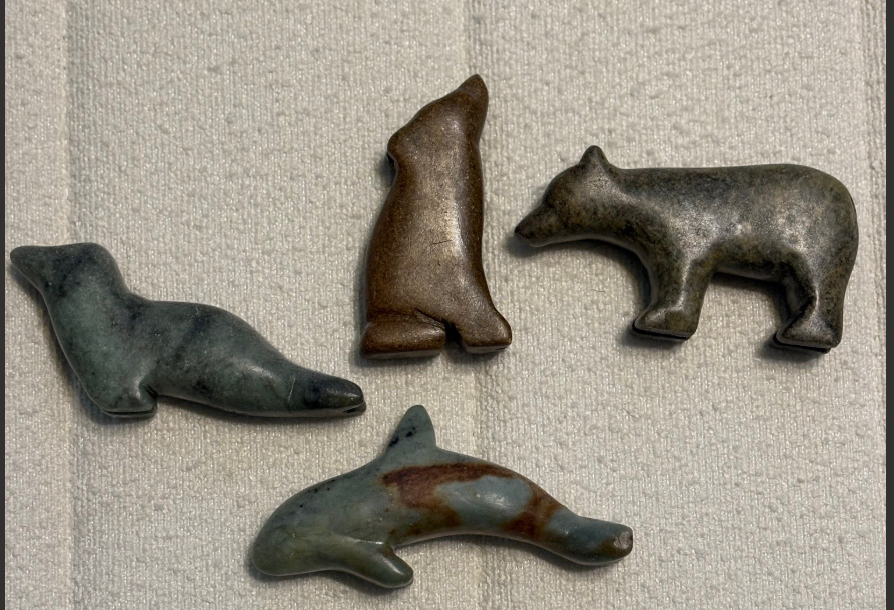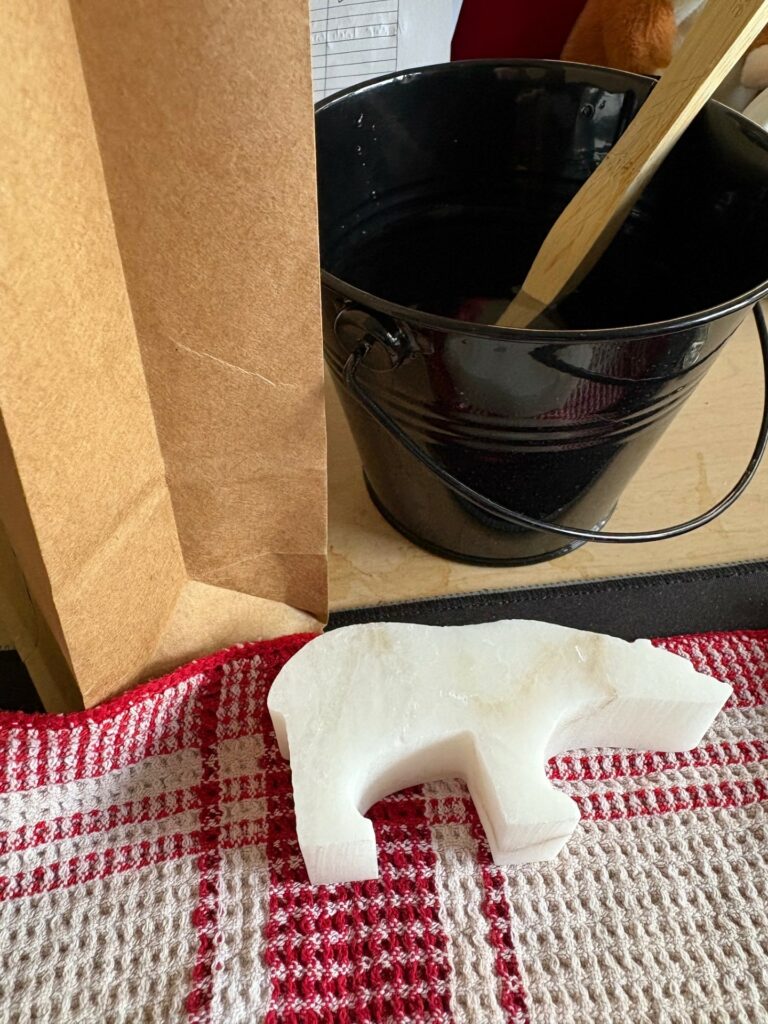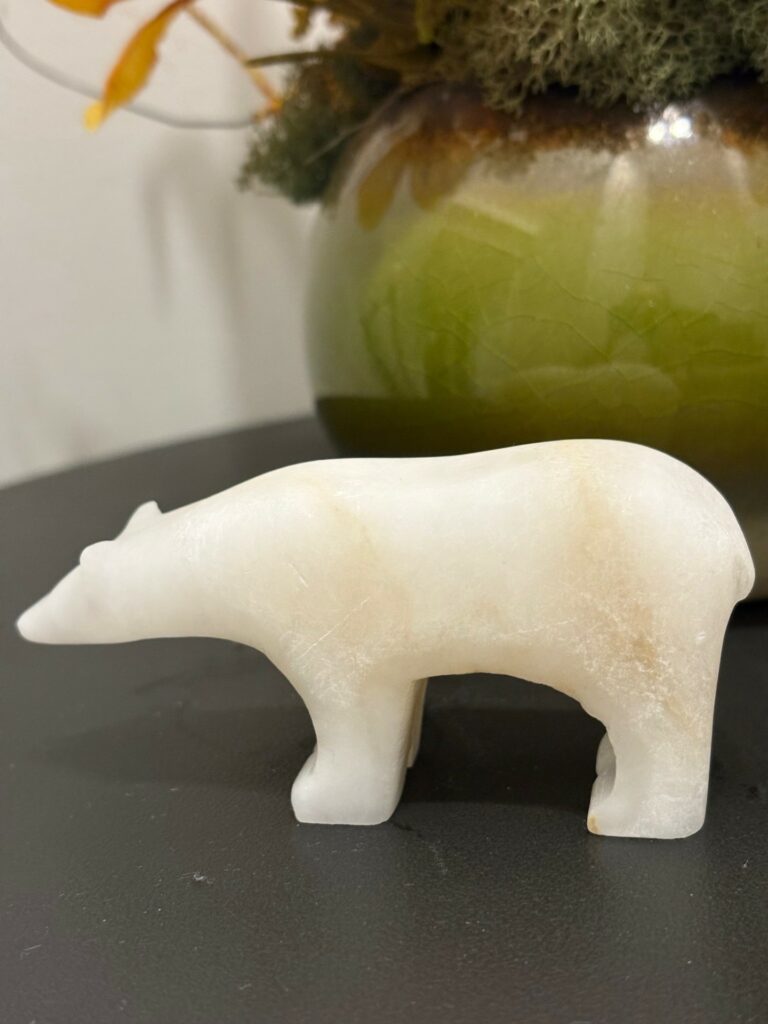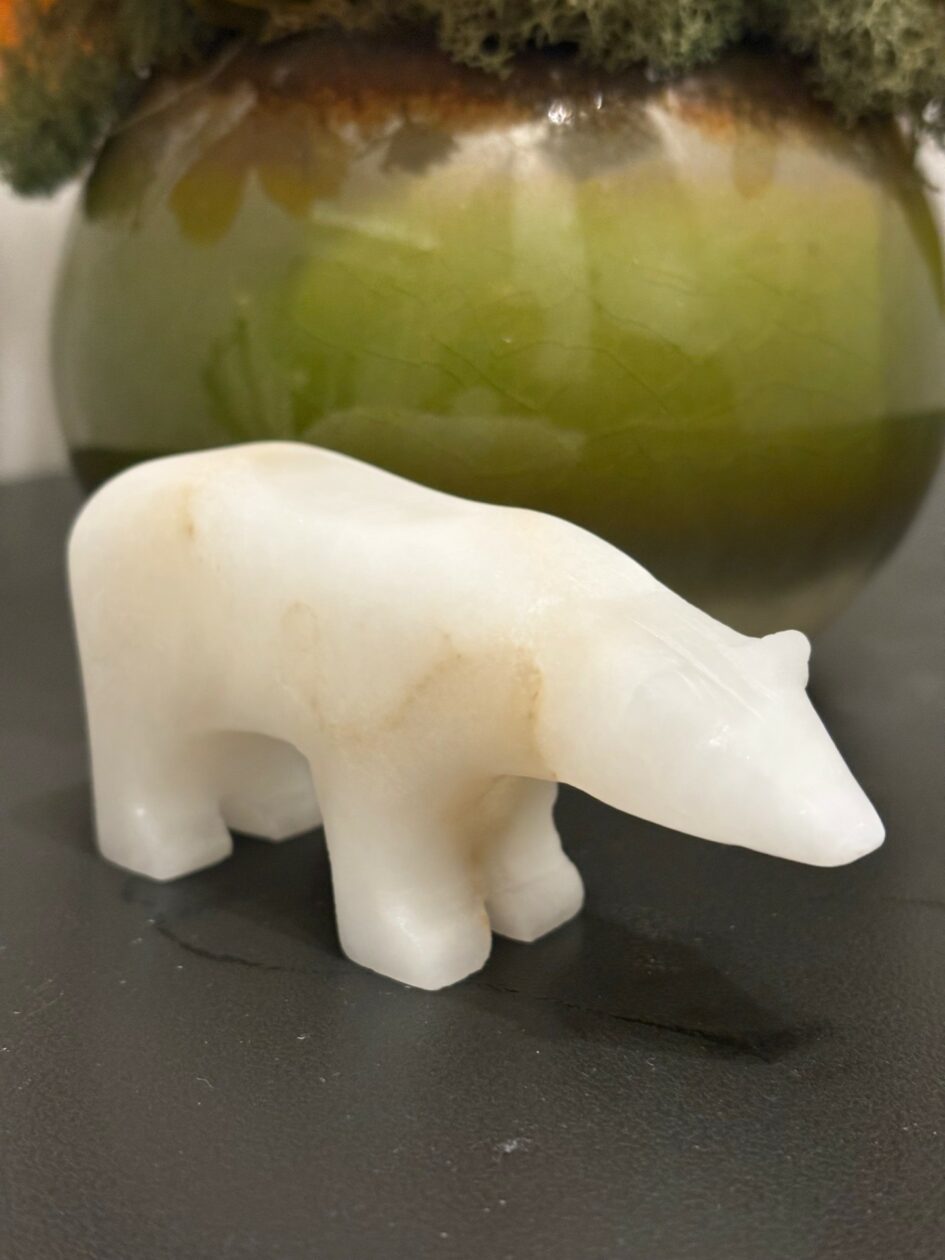March 5th, 2025
A number of years ago at our CTA ProD I took a workshop called Soapstone Carving with a small local company called Studiostone Creative. The first animal I carved in soapstone (which they get from Brazil) was the wolf. It was such a great experience that I bought a bear carving kit for my son. He enjoyed carving so much that I went about trying to arrange for my classes, a LINC 6 and 7/8 at the time, to try it. We had an instructor come to the school and lead us in carving, the students could choose from a few different animals.

Then, with the pandemic, we stopped having so many guest speakers come to the school and soapstone carving slipped my mind. A few weeks ago, with the need to spend some student activity money before spring break, I looked into the carving again. This time, I noticed that the company now offers the option of a 2 hour zoom lesson so that multiple classes can join at the same time. I also noticed the alabaster polar bear! This was one that I hadn’t carved before so, for admittedly selfish reasons, I pitched the zoom carving of the alabaster polar bear to my coworkers. Luckily they were interested, and I began organizing a 5 class zoom lesson to carve the white bear.

Each student was required to have a few things for the carving: a pencil, a cloth, and a container for water – the bear should be kept wet, so the stone dust isn’t inhaled. We learned from the carving instructor that the alabaster used for these bears is sourced from Spain. She led us through the steps giving us lots of tips along the way. She also shared with the students that she was once a newcomer to Canada, in their shoes learning English and making a new home here. It’s always great when guest speakers and field trip leaders share this with the classes – it really motivates them to keep learning.
The feedback from the classes was very good. Many students from other classes came by to thank me for organizing the carving. They really enjoyed it. Some of the students said it was a very relaxing experience, and others shared that they felt a bit stressed, worried they might make a mistake but that they were happy with their finished carving.
Creating an alabaster bear carving can fit the three dimensions of inclusive design:
- Recognize Diversity and Uniqueness:
- Personal Expression: Each participant can bring their unique vision and creativity to the carving, resulting in a diverse array of bear sculptures that reflect individual styles, skills, and cultural backgrounds.
- Accessibility: The carving process can be adapted for different skill levels and abilities. For example, using various tools and techniques can accommodate those with physical limitations or different levels of carving experience.
- Inclusive Process and Tools:
- Collaborative Effort: The carving activity involved collaboration among diverse participants, fostering an inclusive environment where everyone contributed their perspectives and ideas. This included working in groups or pairs, where some of the students supported and learned from each other. Many of the more comfortable students assisted the others who were doubting their skills.
- Accessible Tools and Materials: Ensuring that the tools and materials used are accessible and safe for all participants. The materials were non-toxic, and the instructions were clear and easy to follow, so everyone could participate comfortably.
- Broader Beneficial Impact:
- Cultural Connection: Alabaster bear carving connected the students to cultural traditions and histories, promoting a deeper understanding and appreciation of diverse cultures. The instructor highlighted the importance of carving in Indigenous culture.
- Empowerment and Confidence: Completing the carving project boosted participants’ confidence and sense of accomplishment, empowered them to take on new challenges and explore their creativity further. Many asked how they could get a kit to do with their kids on the spring break.
By looking through the lens of the inclusive design principles, the alabaster bear carving activity can be seen as a meaningful and enriching experience that celebrates diversity, fosters collaboration, and creates a positive impact on participants.


Recent Comments